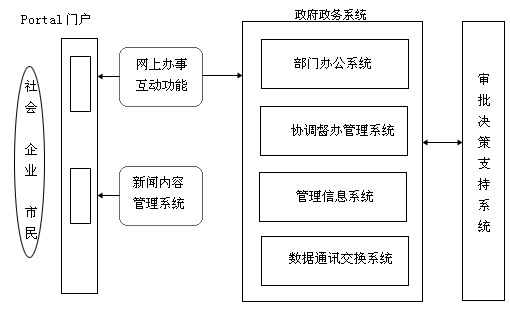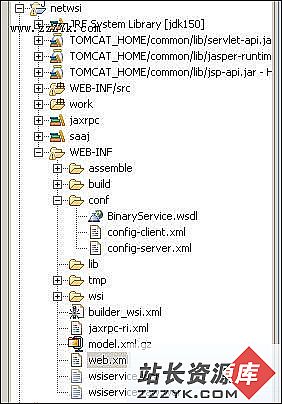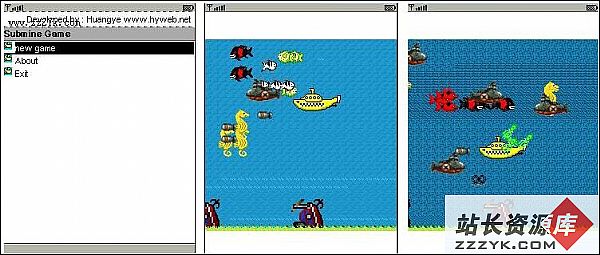当前位置:编程学习 > JSP >>
答案:
一个在线考试系统,测试你的jsp知识,代码不是特别多,所以不加注释了(http://jspbbs.yeah.net)
answer.jsp
<%-- Include directive --%>
<%@ include file="header.html" %>
<TABLE BORDER="0" CELLPADDING="0" CELLSPACING="0">
<TR>
<TD VALIGN="TOP"><FONT FACE="Verdana, Arial, Helvetica, sans-serif">
<DIV ALIGN="RIGHT">
<FONT SIZE="-1"><A HREF=>Index</A></FONT></DIV>
<H2 ALIGN="RIGHT"><FONT COLOR="#FFFFFFF">JSP Professional, Chapter 12 Quiz
Answers</FONT></H2>
<H4 ALIGN="RIGHT"><EM>by Dan Malks</EM></H4>
<BR><BR>
<TABLE BORDER="0" CELLSPACING="8" CELLPADDING="2" <TR><TD>
<FONT FACE="Verdana, Arial, Helvetica, sans-serif">
<%-- Page directive that applies to entire page. --%>
<%@ page language="java" %>
<%-- Identifies bean as "worker" and tells the page where to locate the bean. --%>
<jsp:useBean id="worker" class="jdc.quiz.QuizResponses" scope="request" />
<%-- Set bean properties with a wildcard. --%>
<jsp:setProperty name="worker" property="*" />
<%-- Scoring --%>
<%-- Variable declaration in code scriptlet -->
<% int score = 0; %>
<!-- Quiz Questions -->
<!-- Question 1 -->
<TR><TD VALIGN="TOP"><FONT FACE="Verdana, Arial, Helvetica, sans-serif">1.</FONT></TD>
<%-- The method getOne() was set up in the bean with the id "worker" --%>
<%-- All Java code is enclosed in <% %>, leaving HTML to be easily --%>
<%-- changed or updated. --%>
<% if((worker.getOne() != null) && ((worker.getOne()).equals("D"))) { score ++; %>
<TD VALIGN="TOP"><FONT FACE="Verdana, Arial, Helvetica, sans-serif"> <B>D</B>
is correct!</FONT></TD>
<% } else if (worker.getOne() != null) { %>
<TD VALIGN="TOP"><FONT COLOR=red><jsp:getProperty name="worker" property="one" />
is incorrect!</FONT></TD>
<% } else { %>
<TD VALIGN="TOP">Blank <FONT COLOR=red>X</FONT></TD>
<% } %>
<TD VALIGN="TOP"><FONT FACE="Verdana, Arial, Helvetica, sans-serif">
Every JavaServer Pages<SUP><FONT SIZE="-2">TM</FONT></SUP>
(JSP)<SUP><FONT SIZE="-2">TM</FONT></SUP>source page is compiled into
a servlet before it is executed at runtime.</A><BR><BR></FONT></TD></TR>
<!-- Question 2 -->
<TR><TD VALIGN="TOP"><FONT FACE="Verdana, Arial, Helvetica, sans-serif">2.</FONT></TD>
<% if ((worker.getTwo() != null) && ((worker.getTwo()).equals("B"))) { score ++; %>
<TD VALIGN="TOP"><FONT FACE="Verdana, Arial, Helvetica, sans-serif"> <B>B</B>
is correct!<BR></FONT></TD>
<% } else if (worker.getTwo() != null) { %>
<TD VALIGN="TOP"><FONT FACE="Verdana, Arial, Helvetica, sans-serif">
<FONT COLOR=red><jsp:getProperty name="worker" property="two" /> is
incorrect</FONT></TD>
<% } else { %>
<TD VALIGN="TOP"><FONT FACE="Verdana, Arial, Helvetica, sans-serif">
Blank
<FONT COLOR=red>X</FONT></FONT></TD>
<% } %>
<TD VALIGN="TOP"><FONT FACE="Verdana, Arial, Helvetica, sans-serif">
When large amounts of Java scriptlet code are mixed with HTML markup
within a JSP page, not only do readability and reuse suffer, but often
bugs are introduced as web-production team members, who may not be
familiar with Java programming, need to modify the accompanying markup.
Additionally, dependencies now exist among various teams competing for the
same file, making the development process less efficient.
</FONT>
</TD></TR>
<!-- Question 3 -->
<TR><TD VALIGN="TOP"><FONT FACE="Verdana, Arial, Helvetica, sans-serif">3.</FONT></TD>
<% if ((worker.getThree() != null) && ((worker.getThree()).equals("D"))) { score ++; %>
<TD VALIGN="TOP"><FONT FACE="Verdana, Arial, Helvetica, sans-serif"> <B>D</B>
is correct!<BR></FONT></TD>
<% } else if (worker.getThree() != null) { %>
<TD VALIGN="TOP"><FONT FACE="Verdana, Arial, Helvetica, sans-serif">
<FONT COLOR=red><jsp:getProperty name="worker" property="three" /> is
incorrect</FONT></FONT></TD>
<% } else { %>
<TD VALIGN="TOP"><FONT FACE="Verdana, Arial, Helvetica, sans-serif">
Blank <FONT COLOR=red>X</FONT></FONT></TD>
<% } %>
<TD VALIGN="TOP"><FONT FACE="Verdana, Arial, Helvetica, sans-serif">
Doing an HTTP redirect requires a round-trip to the client. If this
is not required, and the only desire is to forward the request to
another resource, then this can be much more efficiently accomplished
with the <CODE>RequestDispatcher</CODE>. Additionally, when using the
dispatcher the state of the request object is maintained between
resources, which will not be the case with the HTTP redirect.
</FONT></TD></TR>
<!-- Question 4 -->
<TR><TD VALIGN="TOP"><FONT FACE="Verdana, Arial, Helvetica, sans-serif">4.</TD>
<% if ((worker.getFour() != null) && ((worker.getFour()).equals("C"))) { score ++; %>
<TD VALIGN="TOP"><FONT FACE="Verdana, Arial, Helvetica, sans-serif"> <B>C</B>
is correct!<BR></FONT></TD>
<% } else if (worker.getFour() != null) { %>
<TD VALIGN="TOP"><FONT FACE="Verdana, Arial, Helvetica, sans-serif">
<FONT COLOR=red><jsp:getProperty name="worker" property="four" /> is
incorrect</FONT></FONT></TD>
<% } else { %>
<TD VALIGN="TOP"><FONT FACE="Verdana, Arial, Helvetica, sans-serif">
Blank <FONT COLOR=red>X</FONT></FONT></TD>
<% } %>
<TD VALIGN="TOP"><FONT FACE="Verdana, Arial, Helvetica, sans-serif">
Business logic is better contained in a
JavaBean<SUP><FONT SIZE="-2">TM</FONT></SUP> or a servlet, which is
owned by a software developer. When lots of Java code is embedded
directly within the JSP page as scriptlets, the
"cut-and-paste" mentality tends to prevail when it comes
to code reuse.
</FONT>
</TD></TR>
<!-- Question 5 -->
<TR><TD VALIGN="TOP&q
上一个:jsp在线考试系统-bean文件
下一个:jsp在线考试系统-htm文件
- 更多JSP疑问解答:
- jsp新手求指导,不要笑!
- 如何让一个form提取的值传递给多个jsp?
- DW中,新建的html页面能否有jsp或php代码?
- jsp 如何限制表单,实现只能填写特定的数据。
- jsp 和javabean结合的程序有问题
- 从数据库里取出的数据如何传递到另外的jsp页面中
- 你好,ext嵌入那个jsp页面,是不是还需要加上一些插件啊,不太懂,麻烦你了。
- JSP不能处理所有问题吗?还要来一大堆的TLD,TAG,XML。为JSP 非要 Servlet 不可吗?
- 光标离开时全角转半角在jsp中怎么实现
- jsp 页面 打开 pdf 文件 控制大小 和 工具栏 能发份源码么 谢啦
- jsp页面点保存按钮,运行缓慢,弹出对话框提示
- jsp刷新页面如何不闪屏
- jsp 与html 的交互问题?
- jsp小数显示问题 例如 我在oracle 数据库中查询出来的是 0.01 但是在jsp页面上就显示成 .01 没有前面的0
- jsp中日历控件





